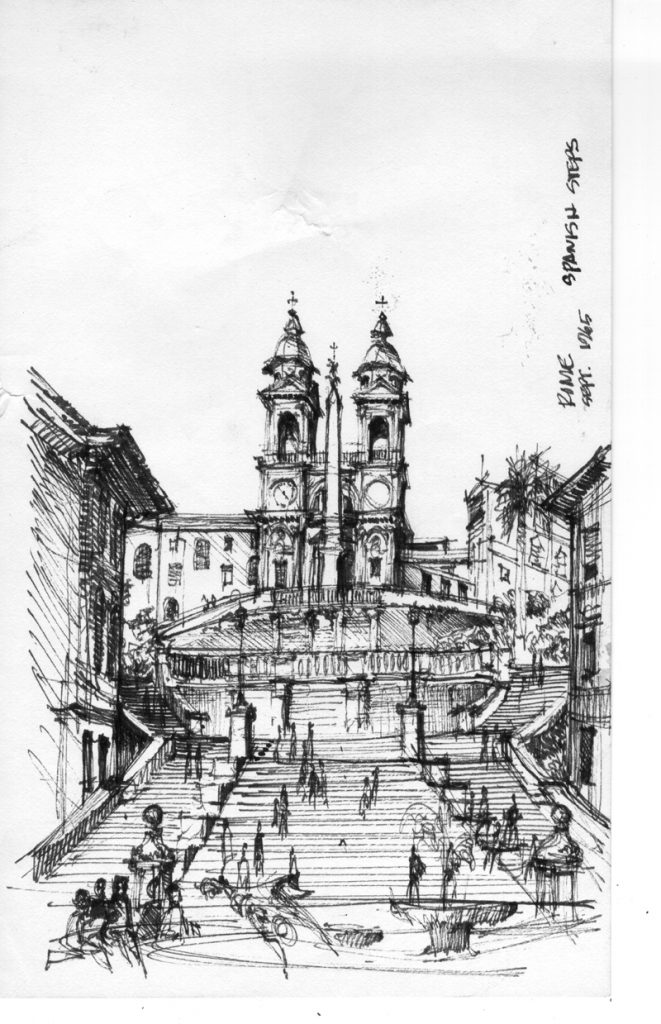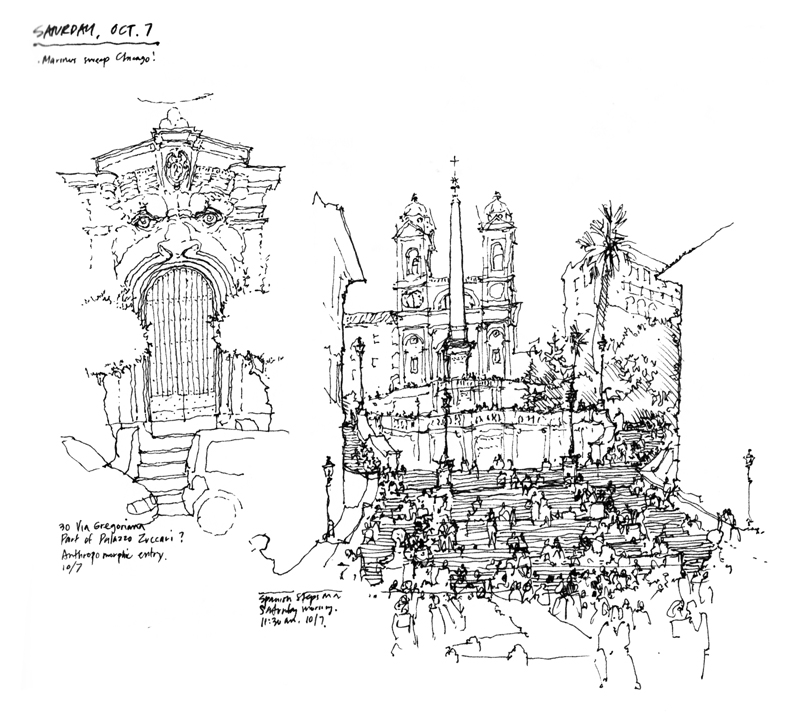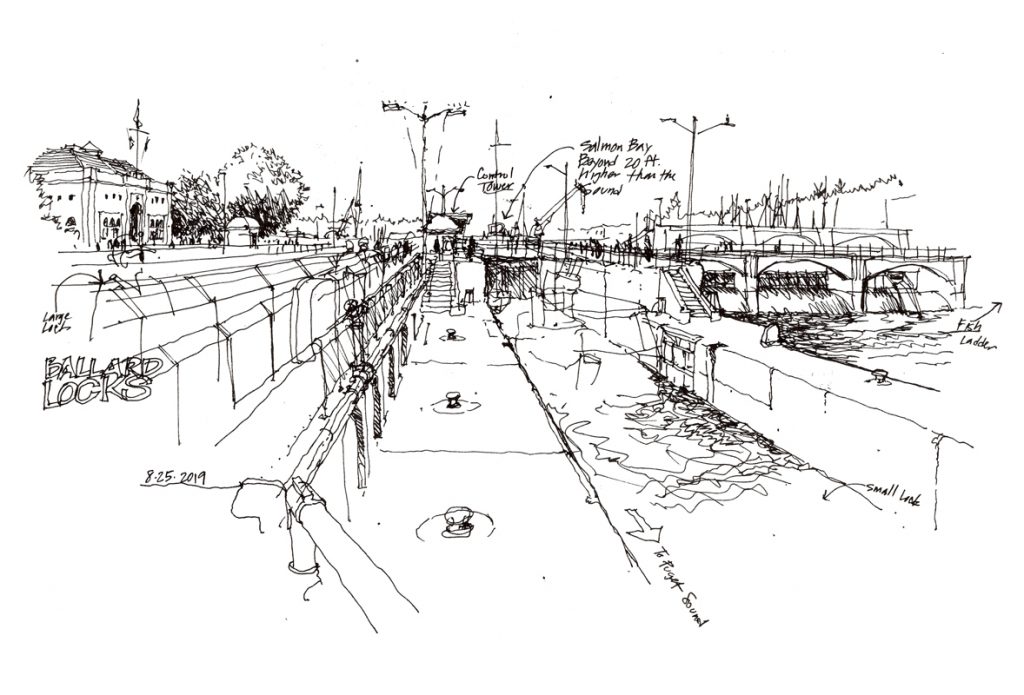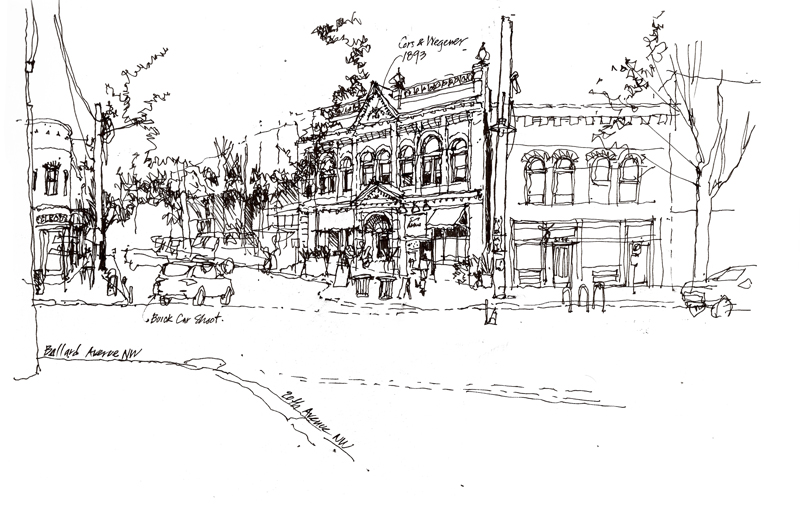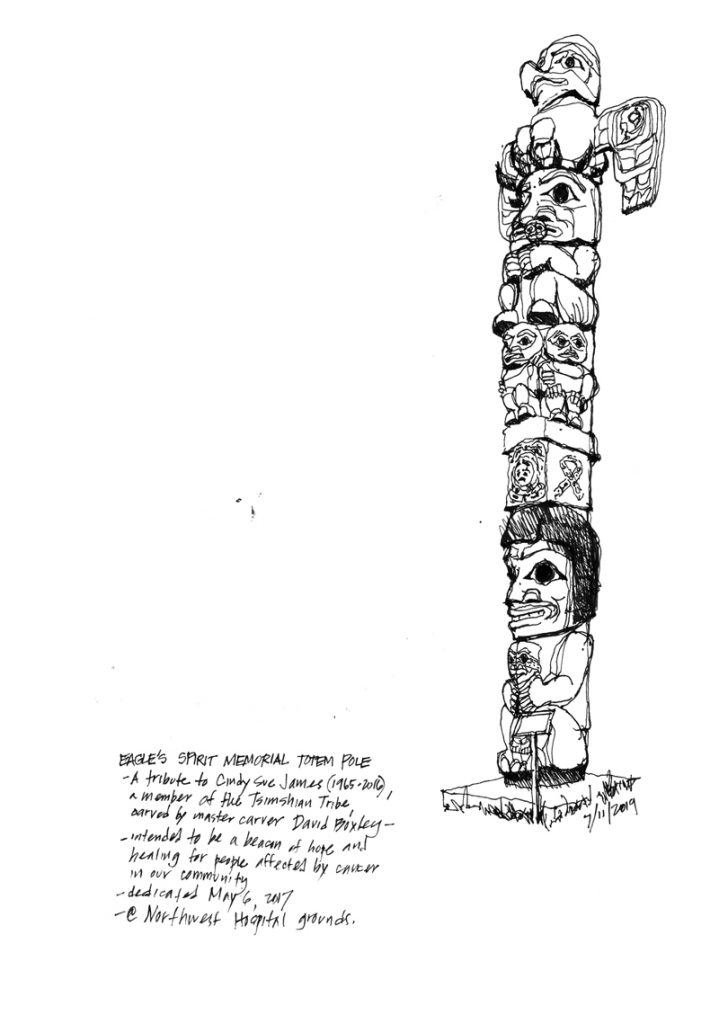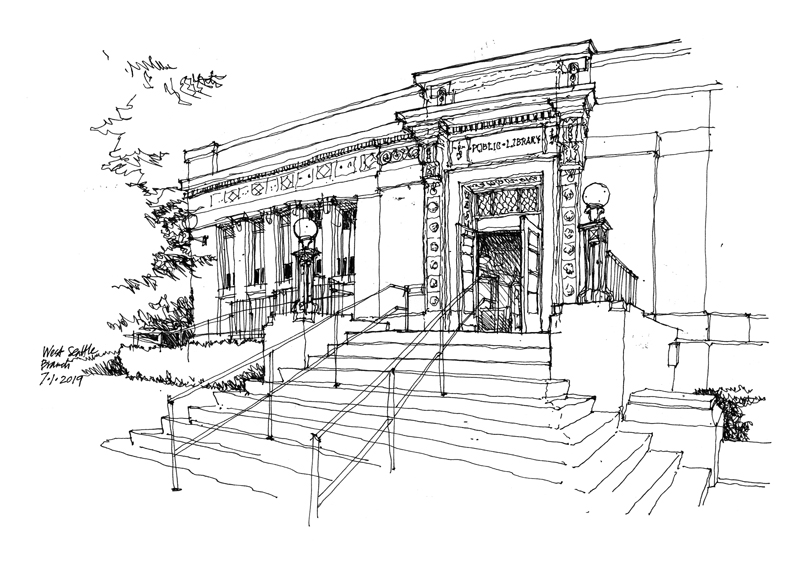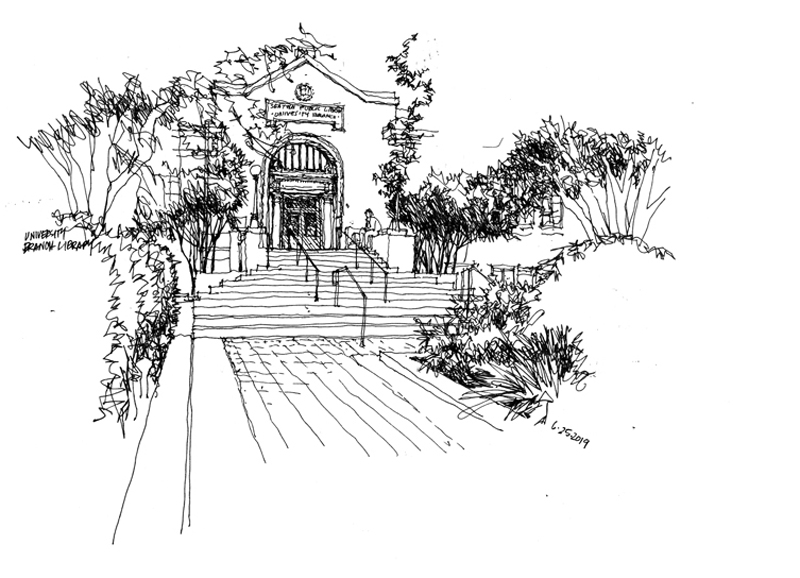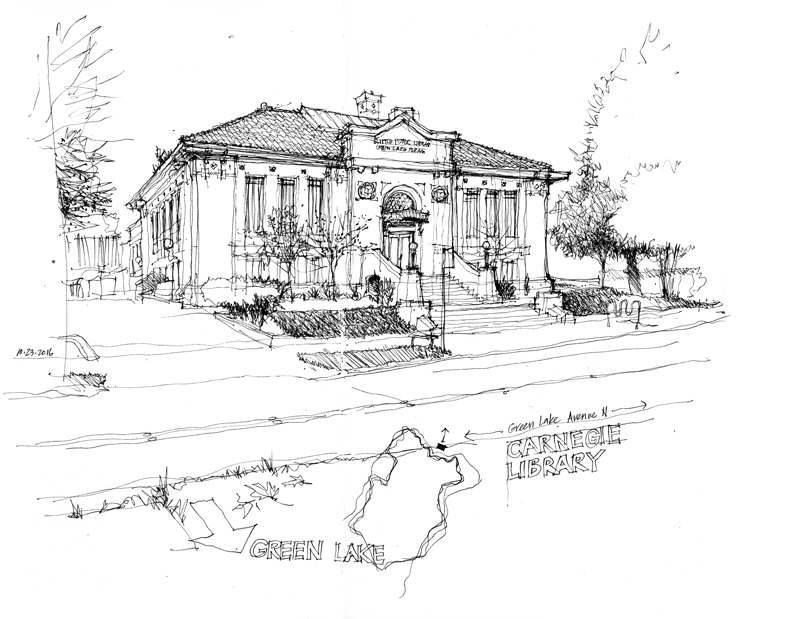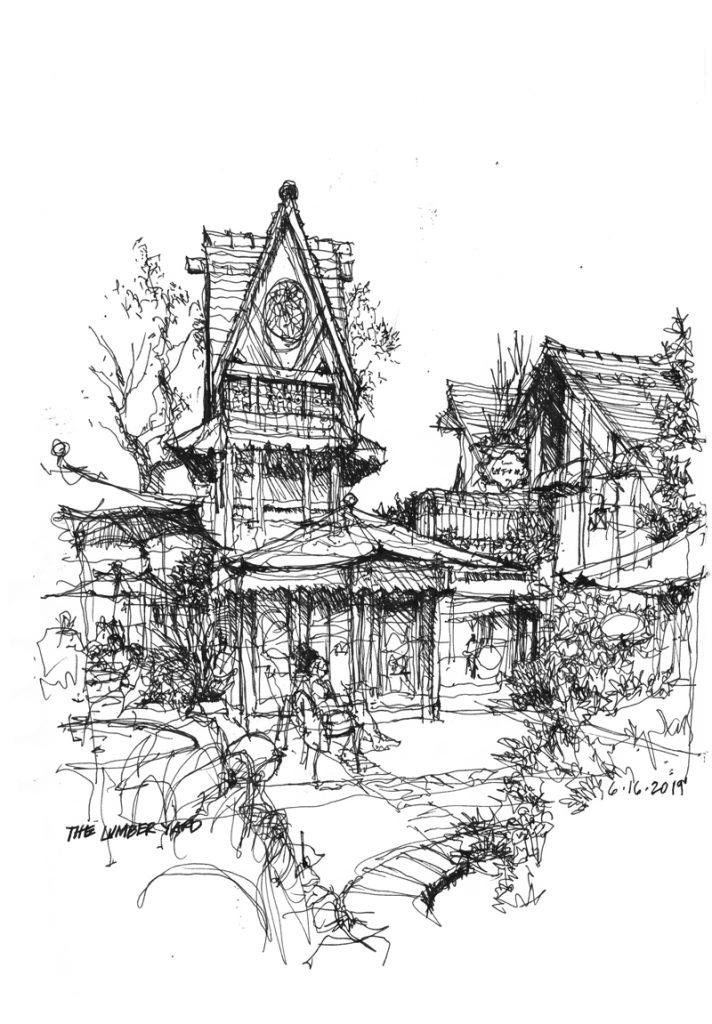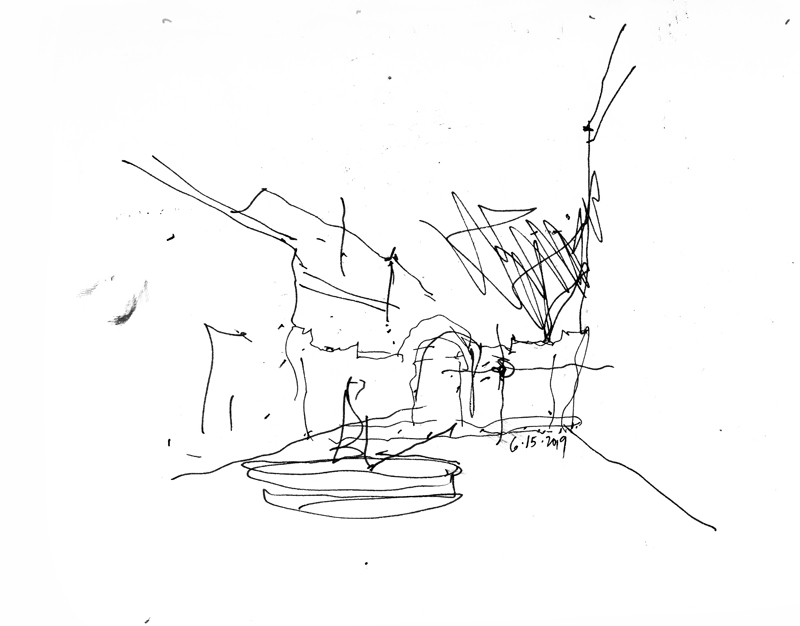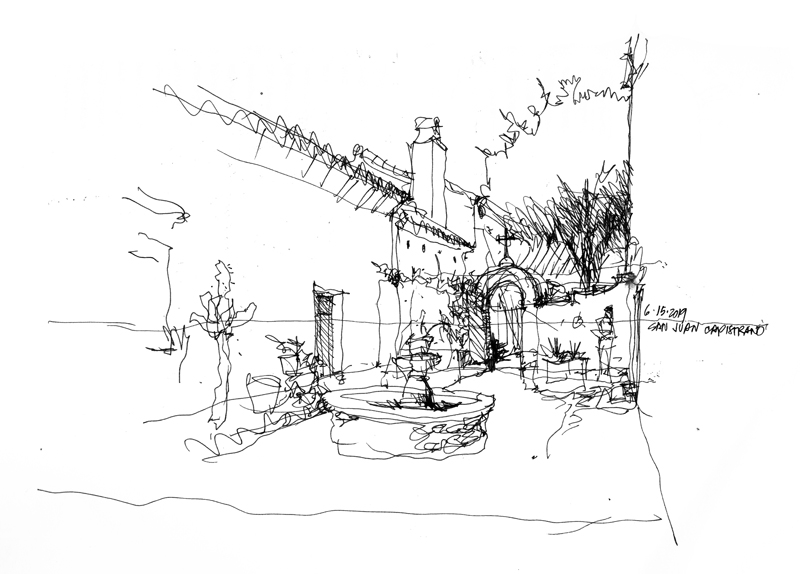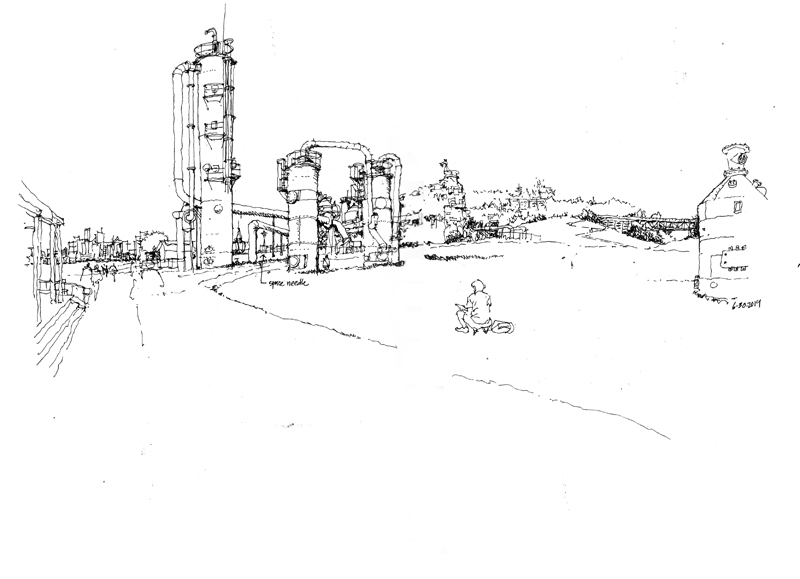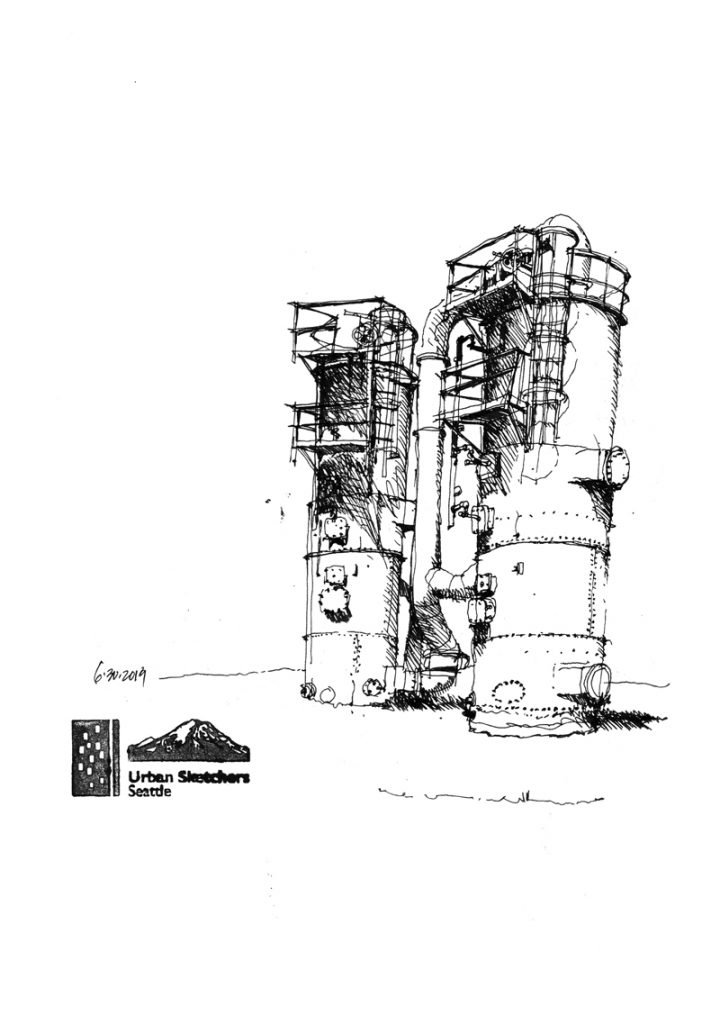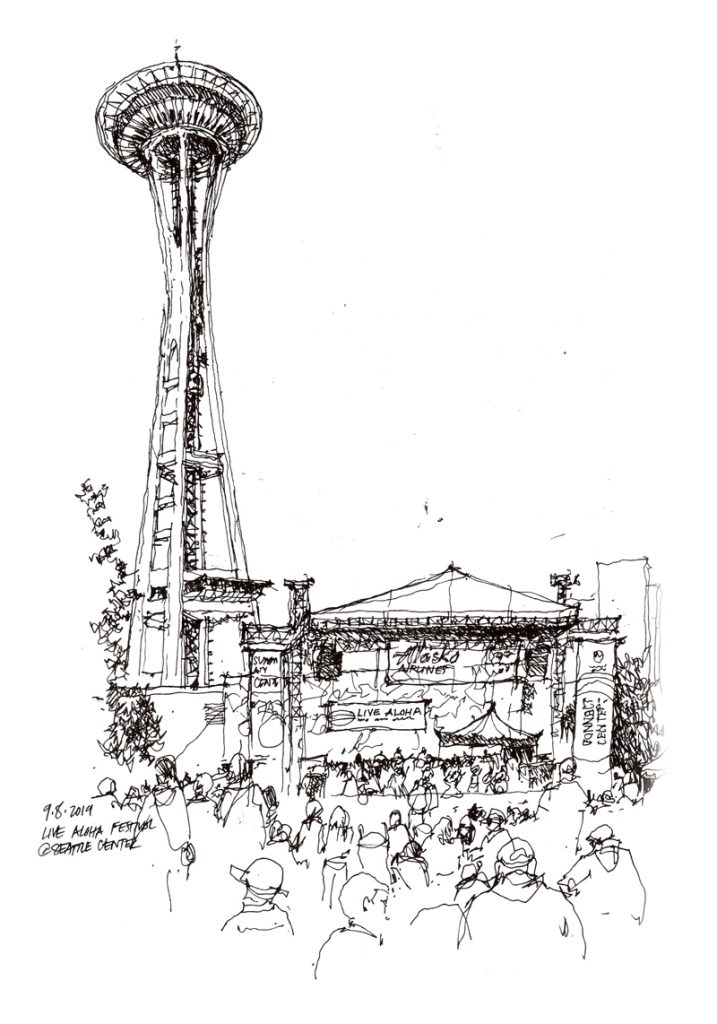
On a day of passing clouds, sun breaks, and eventually thunderstorms, the Live Aloha Hawaiian Cultural Festival occupied the grounds of Seattle Center with three performance stages, vendors of all things Hawaiian, and food trucks selling plate lunches, malasadas, shaved ice, and other island foods. In its 12th year, the festival continues to “promote, perpetuate and share the Hawaiian culture in the Pacific Northwest by enriching and strengthening the Hawaiian community and celebrating the arts and culture of Hawaii.”
The above is a drawing of the Mural Amphitheater stage during the performance of a halau hula (hula school), with the Space Needle looming overhead.

